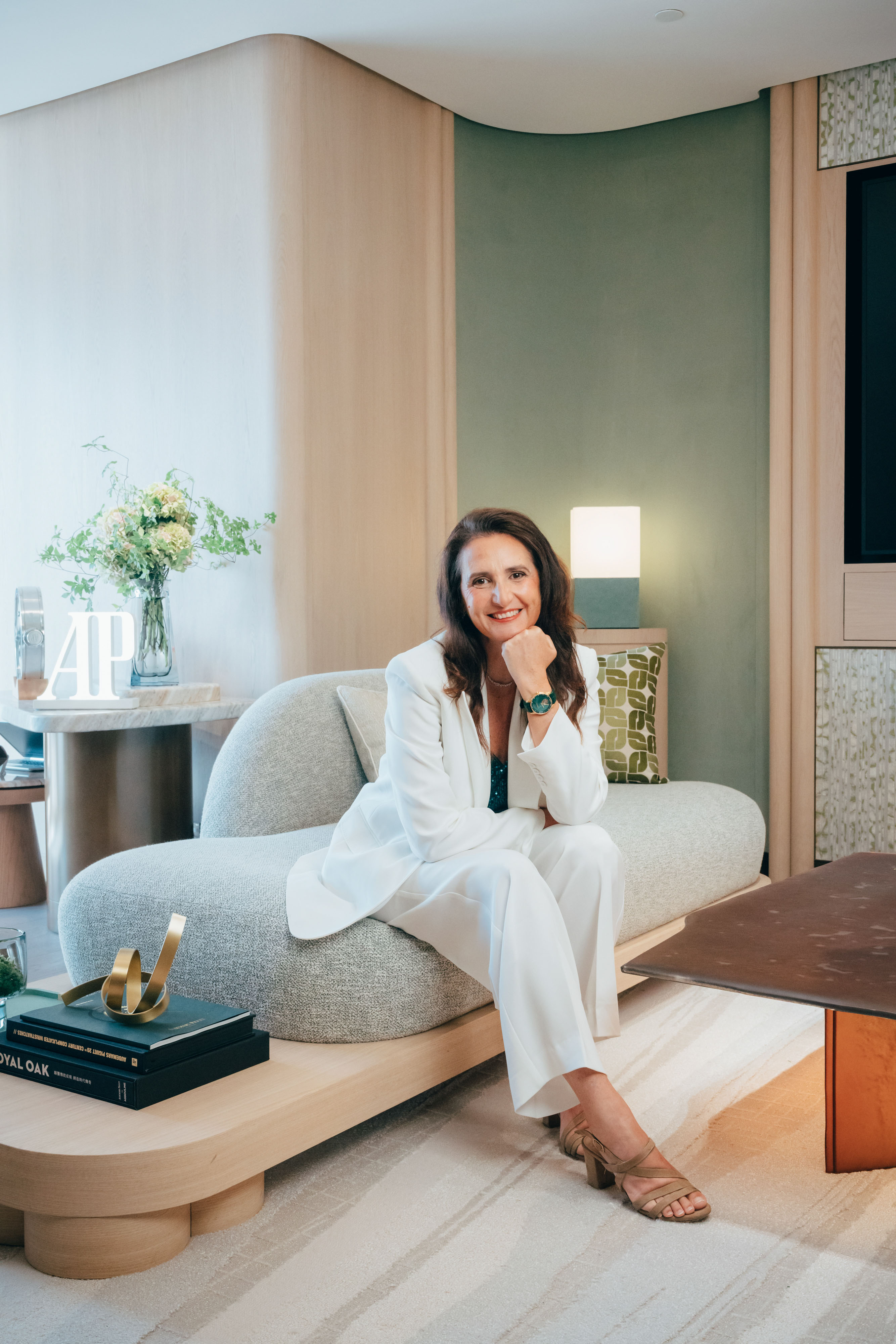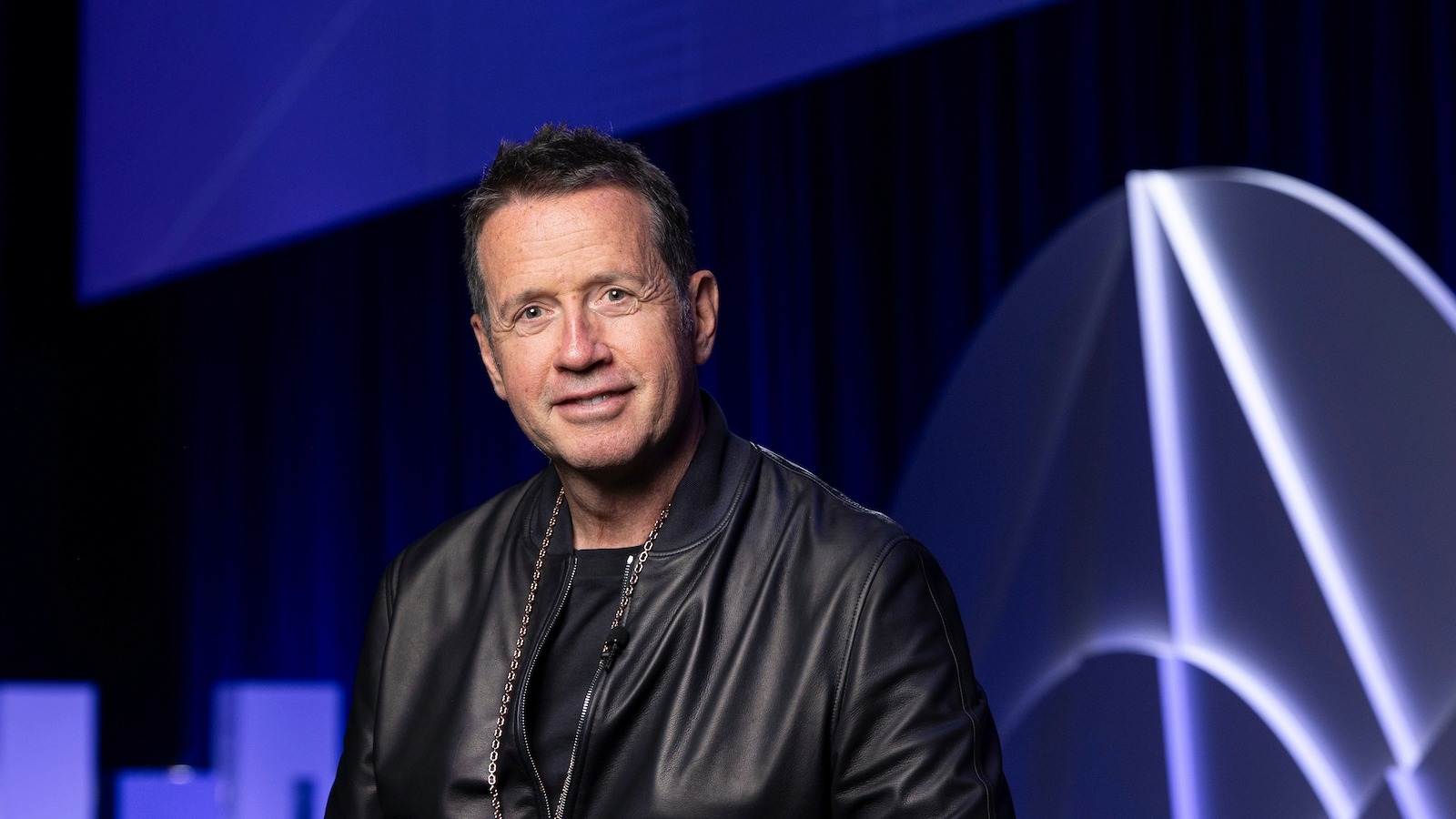François-Henri Pinault, chairman and CEO of PPR, shares his ambitions for PPR, Yves Saint Laurent and the conglomerate’s ongoing commitment to sustainable social responsibility

François-Henri Pinault, chairman and CEO of PPR, shares his ambitions for PPR, Yves Saint Laurent and the conglomerate’s ongoing commitment to sustainable social responsibility
François-Henri Pinault, chairman and CEO of PPR, shares his ambitions for PPR, Yves Saint Laurent and the conglomerate’s ongoing commitment to sustainable social responsibility.
Since its inception in 1963, PPR has undergone profound transformations. The building materials business, originally led by François Pinault, has grown to become a formidable force in the luxury sphere, as the owner of iconic French and Italian brands such as Yves Saint Laurent, Boucheron, Gucci and Bottega Veneta.
PPR’s foray into luxury came in 1999, when the group purchased a 42% stake of Gucci, then under the leadership of Tom Ford and Domenico de Sole. By 2004 Gucci Group, as the luxury arm was then known, purchased the afore mentioned brands, Sergio Rossi and Balenciaga, and launched partnership agreements with young British designers Stella McCartney and Alexander McQueen.
François-Henri Pinault joined PPR in 1987, after graduating business school at France’s HEC. He went on to interview for brands such as Colgate-Palmolive, Procter & Gamble, Price Waterhouse, but eventually took a post at his father’s company, realising that he “would be able to assume full responsibility for a balance sheet,” as opposed to “assistant to this, or regional chief of that” (Financial Times).
His ambition, determination and proven talent led to the succession of his father, as chairman and CEO of PPR In 2007, under Pinault Jnr’s leadership, the group purchased the controlling stake in sport & lifestyle brand Puma, further establishing PPR as a leader in global brands. This position was further cemented by 2011’s acquisition of Volcom, followed by the more recent strategic transformation into global Apparel and Accessories specialist, organised around a Sport & Lifestyle group and Luxury group.
We spoke with François-Henri Pinault, on the eve of his keynote address, at the 2012 Financial Times Business of Luxury Summit in Marrakech, to learn more about his ambitions for the future of PPR.
“ Self-fulfilment, the desire to look and feel good by wearing timeless quality are influencing buying decisions in the luxury market ”
The luxury industry is experiencing a period of unprecedented change. In the face of global economic uncertainty, centres of wealth are expanding, and massive social and cultural shifts are changing consumer expectations.
How have these changes impacted PPR’s overall strategy?
That is correct. I believe that as populations around the world grow wealthier, people seek ways to enjoy and express themselves through exclusivity and differentiation. Self-fulfilment, the desire to look and feel good by wearing timeless quality are influencing buying decisions in the luxury market.
We take advantage of such underlying social trends which provide considerable growth prospects for our brands and shelter them from cyclical swings.
Our strategy is primarily based on the organic growth of our current brands: additional product categories, expansion into new markets and the opening of more stores and other distribution channels. Acquisitions of small to medium size brands with promising expansion prospects and meeting strict criteria can strengthen and complement the existing brand portfolio.
At the same time, our expertise in accelerating the expansion of our companies and globalising our brands is at the centre of the ‘PPR effect’. We ensure comprehensive control of the value chain and provide brands with the financial firepower, expertise and synergies needed to prosper.

Revenues at Bottega Veneta increased by 33% in the first quarter of 2012
The industry remains cautious about the sustainability of double-digit growth in Asia – particularly China – as well as the health of the European and American economies. How do you see the macroeconomic climate evolving in the short term?
We keep a close eye on the market environment across all sectors and across continents, which remains volatile, and affects consumer behaviour. We are confident in the strength and positioning of all our brands, in the continuing growth of their markets, and in our strategic focus. Our geographical diversification is a fundamental vector for growth.
Last year we opened stores in the most buoyant regions, as well as in more established markets where our brands are also growing strongly.
“ I believe we have built a balanced, coherent collection of complementary consumer brands that enjoy powerful equity ”
PPR Luxury is a mix of both heritage and modern brands, primarily focused on fashion and accessories, with the exception of Boucheron, Girard-Perregaux and JeanRichard.
What are the universal characteristics of these brands that make them ‘PPR Brands’?
In the Luxury division we design, manufacture and market leather goods, shoes, ready to wear and hard luxury: jewellery and watches. I believe we have built a balanced, coherent collection of complementary consumer brands that enjoy powerful equity. Our brands have global recognition, are deep rooted and true to their distinctive values. They offer a range of inspirations and set the trends in their respective categories.
Thus, we complemented our luxury brand portfolio last year with the acquisition of leading menswear house, Brioni, and took a majority stake in watchmaker, Girard-Perregaux. Both brands are renowned for combining innovation and traditional craftsmanship, so there’s a good fit with the others.
We operate in the apparel and accessories sectors, in the two fastest growing market segments: luxury and sport & lifestyle. Our ambition for both divisions, which are closely related to each other, is to help people express, fulfil, and enjoy themselves through our products. To achieve this vision, we empower a coherent ensemble of powerful complementary brands to reach their full global growth potential.

François-Henri Pinault with Gucci creative director Frida Giannini & CEO Patrizio di Marco
© Christophe Lepetit
Following the appointment of Hedi Slimane as creative director of Yves Saint Laurent, what are your ambitions for this iconic French fashion house?
As one of the most important French fashion houses, Yves Saint Laurent possesses formidable potential, which I am confident will be successfully harnessed and revealed through the vision of Hedi Slimane. He has a deep understanding of YSL’s very French and very Parisian culture.
Paul Deneve together with Hedi will develop Yves Saint Laurent ‘s full potential by reinforcing the brand’s authenticity and developing its global presence in high growth potential markets. The brand’s outstanding performance in 2011, followed by an excellent first quarter this year, shows its desirability and its ability to combine growth and exclusivity.
The arrival of e-Commerce presents a number of opportunities to luxury brands that were traditionally constrained by physical retail networks. Patrizio di Marco once expressed the belief that Gucci’s digital flagship was destined to become the highest volume store in the world.
What do you believe is the ideal balance of online and offline retail?
I believe that online selling and bricks-and-mortar retail will increasingly complement and support each other, giving customers a more holistic experience with our brands. We have a target of growing our luxury brand business through our single-brand online stores, while customers who buy online very often have been ‘exposed’ to the brand offline and vice-versa.
“ Our ambitions for 2020 is to have 24bn euros in revenue, including 10bn from Asia and over 1bn from e-commerce ”
How do you see this mix evolving in the future?
I think that the real challenge for the future will be to bring these two worlds together in a complementary and uniform manner, which will involve being both customer-centric and innovative. The right balance will follow from that.
Customers will be more and more exposed to multiple touch points. The amount of information on their shopping habits will grow enormously and therefore social CRM and social e-commerce will become even more important.
We are already seeing the physical retail experience evolving to adopt new technology and social engagement. The key will be to offer an even richer customer experience.
PPR has demonstrated a strong commitment to sustainability since the launch of PPR HOME in 2011. How has PPR translated its vision for Corporate Social Responsibility into concrete action?
I personally believe that companies have a role to play to build a more sustainable world – economically, socially and ecologically – than the world we know and live in today. PPR’s brands have been dedicated to corporate social responsibility for some time. In 2011 we moved beyond this conventional approach by establishing PPR HOME, which takes our sustainability effort to the next level.
The latest pioneering solution we have committed to is the Group Environmental Profit & Loss account. This is already in place at PUMA and will be implemented across all PPR Luxury and Sport & Lifestyle brands by 2016. The E P&L; aims at assessing in financial terms (euros) the impact of our activities on the environment, in order to help us mitigate this impact and think differently.
We have also publicly committed to a number of measurable sustainability targets for 2016. The next five years are pivotal and we now have a clear view of what we want to achieve, and the actionable targets we need to take to get us there. We are confident that this type of sustainability-driven approach will generate new business revenues, provide long-term competitive advantage and push innovation across the Group.

PPR acquired Italian tailor Brioni in January 2012, further strengthening its Menswear offering
In the past twelve years, you have managed to build one of the world’s leading luxury conglomerates. What objectives do you have for PPR Luxury in the next twelve years?
I think we have very strong growth potential. I have recently presented to analysts our ambitions for 2020, when we expect the Group to have 24bn euros in revenue, including 10bn from Asia and over 1bn from e-commerce.
With regard to our Luxury division, prospects for growth and continuous improvement are based on the exceptional quality of our products, the talent of our artistic, marketing, merchandising and sales teams — and the rigour with which we control our distribution network and our marketing and communications policy.
We also want to be constantly pushing ourselves against the limits, in the most imaginative and sustainable manner.
For more in our series of conversations with Luxury Leaders, please see our most recent editions as follows:
– Dr Ulrich Bez, CEO, Aston Martin
– Robert Gaymer-Jones, CEO, Sofitel
– Jean-Claude Biver, CEO, Hublot










